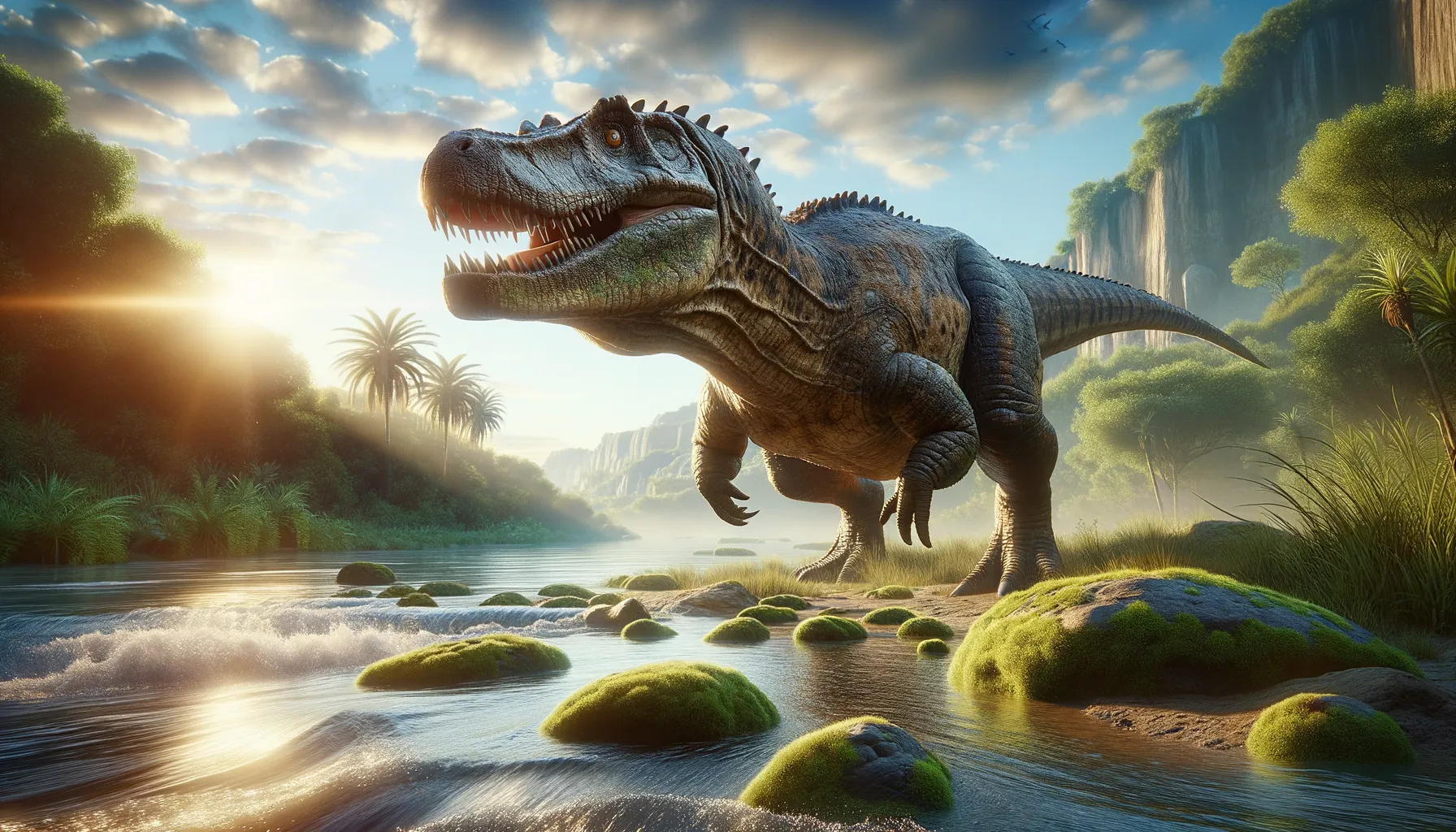
Zatomus
A Triassic titan with a powerful bite.
Period
Triassic
Length
Could reach lengths of up to 5 meters.
Height
Up to 3 meters tall.
Weight
Approximately 200 to 600 kilograms.
Zatomus was a large, crocodile-like reptile that roamed the earth during the Triassic period. Its robust body structure and sharp teeth suggest it was a formidable predator of its time. Discovered in modern-day North America, Zatomus provides insight into the diverse ecosystem that existed millions of years ago. Its fossil remains have helped paleontologists understand more about prehistoric predator-prey dynamics.
Diet
Zatomus was primarily carnivorous, preying on smaller vertebrates. Its strong jaws and teeth were well-suited for capturing and consuming a variety of prey, making it a dominant hunter of its time.
Hunting
Zatomus likely employed ambush tactics, using its powerful limbs to swiftly capture prey. It may have waited in the cover of vegetation or water before launching a rapid attack, relying on the element of surprise.
Environmental challenges
Zatomus lived in a diverse ecosystem that included competition from other predators. It faced environmental changes as the Earth's climate transitioned, which would have impacted food availability. Additionally, land and water habitats posed different challenges, from droughts to flooding, which it had to navigate to survive.
Speed
Moderate, with average agility for its size.
Lifespan
Estimated to be around 20-30 years.
First discovery
First discovered in the late 19th century in North America.
Fun Facts
- Zatomus was a prehistoric reptile known from the Late Triassic period, which makes it over 200 million years old.
- Despite its dinosaur-sounding name, Zatomus was actually not a dinosaur; it belonged to a group called archosaur reptiles.
- Fossils of Zatomus have primarily been found in North America, particularly in areas that are now the southeastern United States.
- Zatomus was a carnivore, likely featuring sharp teeth suited for a meat-based diet.
- It was named by the famous American paleontologist Edward Drinker Cope in 1878.
- Zatomus shares its family with crocodilians, which means it might have looked more like a prehistoric crocodile than a traditional dinosaur.
- The size and exact appearance of Zatomus remain somewhat mysterious due to limited fossil remains, sparking curiosity and debate among paleontologists.
Growth and Development
Zatomus likely grew rapidly after hatching to avoid predation. Its development involved strengthening its limbs and expanding its capacity to hunt effectively. As it matured, its growth plateaued, focusing more on refining its hunting skills and territorial dominance.
Habitat
Zatomus inhabited a variety of environments, including riverbanks, swamps, and forested areas. Its adaptability allowed it to thrive in both terrestrial and aquatic settings. Access to water sources was crucial for hunting and temperature regulation.
Interaction with other species
Zatomus likely competed with other large predators for resources. Its interactions with herbivorous species would have been primarily as a predator. It may have engaged in territorial disputes with similar-sized creatures, marking its dominance.
Natural lifespan
Zatomus's natural lifespan was around 20-30 years.
Reproduction
Zatomus likely laid eggs, similar to modern reptiles, in secured nests. Parental care may have been limited, with young Zatomus being relatively independent shortly after hatching. The location of nesting sites would be chosen for protection against predators.
Social behaviour
Zatomus was probably solitary, with limited social interaction outside of mating. Territorial behavior was likely prominent, with individuals maintaining and defending specific areas. Social interactions could include aggressive displays or vocalizations to ward off competitors.
Fossil locations
Fossils of Zatomus have been found primarily in North America, specifically in regions that are now the southeastern United States. These fossils provide crucial evidence of its existence and help reconstruct the Triassic ecosystems.
